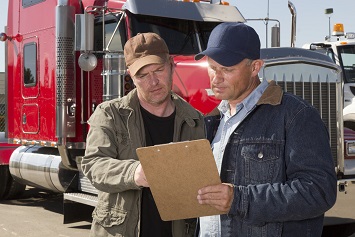June 30, 2018, marks the launch date of the U.S. Environmental Protection Agency’s (EPA) national e-Manifest system in all 50 states. Revised regulations are in place, the new system has been tested by users, and countless questions have been asked of the EPA, primarily regarding the mechanics of how to register for and navigate through the new manifest system. All of this new information is learnable, but sometimes, the devil is in the details. Let’s go over a few matters that may have received less attention in the flurry of getting up to speed with this new manifest process.
Paper Manifests: They Exist and Can Be Used
By now, most people know that paper manifests may still be used, albeit not for too much longer (3 to 5 years). But there’s a new manifest in town—a version that consists of 5 copies rather than 6. It’s EPA Form 8700-22 (Rev. 12-17), and despite the date, it is the most recent edition of the form. However, the EPA has indicated that this new 5-copy form is not likely to be available for use from most printers until about September 1, 2018.
But what about that pile of 6-copy manifests sitting in your facility—can they still be used? At first (and in the instructions to the new 5-copy form), the EPA said that only the new manifest could be used after June 30, 2018, and that the “use of any earlier editions is prohibited.” However, the EPA has relented and has most recently said that existing stocks of 6-copy manifests can be used provided that the distribution information specified on the top copy of the new 5-copy edition is added to the top copy of the older 6-copy edition. That information, in the lower right-hand corner of the top copy, reads, “Designated Facility to EPA’s e-Manifest System.” So, how should this information be added to 6-copy manifests? The EPA has no preference, as long as confusion is minimized. However, the Agency’s suggestion that an adhesive label with the preprinted distribution language be applied to the lower right-hand corner of the top copy is probably the best way to go.
Records for Generators
The manifest regulations still require all waste handlers (generators, transporters, and receiving facilities) to keep records of their manifests that evidence the signatures of each of the parties involved in the entire chain of custody. When all parties use an e-Manifest, these records are maintained within the e-Manifest system. It becomes a bit tricky for generators that continue to use paper manifests and even trickier if they have not registered with the e-Manifest system and created an account for monitoring manifest activity. The following examples describe how a generator can meet its recordkeeping requirements when choosing to use a paper manifest. In all examples, the generator retains a paper copy hand-signed by the generator and the transporter.
Example 1
Using paper throughout and registered. Generators that use paper manifests may register with the e-Manifest system and create an account for monitoring manifest activity. Such generators may rely on the scanned image of the paper manifest uploaded to the e-Manifest system by the receiving facility as the generator’s final manifest copy, as this image bears the signature of the receiving facility. This image copy distributed to the generator’s e-Manifest account replaces the paper copy that previously would be mailed to the generator by the receiving facility.
Example 2
Using paper throughout but not registered. Generators that use paper manifests but have not registered and created an e-Manifest account have a problem: how to receive a completed copy of the manifest when the receiving facility is submitting an electronic copy to the EPA. The solution is to make arrangements with the receiving facility to obtain a signed paper copy of the completed manifest.
Example 3
Hybrid manifests. For those manifests that begin with the generator as a paper manifest and then are converted to an e-Manifest by the transporter (known as a “hybrid” manifest), the situation is different. Generators cannot replace in their records their initial paper copy with the final copy signed by the receiving facility because the receiving facility’s final copy is an e-Manifest signed electronically and not an image file that will display the hand signatures of all the waste handlers. If using the hybrid manifest, the generator must retain its hand-signed paper copy in its records for the entire record retention period. If registered, the generator can access the receiving facility’s copy on the e-Manifest system. If not registered, the generator, as in Example 2, will have to ask the receiving facility for a copy of the e-Manifest that includes the receiving facility’s electronic signature.
Manifest Corrections
One of the features of the e-Manifest system is that any party in the chain of custody can submit data corrections to the system at any time after the receiving facility has submitted its signed copy of the manifest to the system. This allows waste handlers, as well as other interested people, to approve or track post-receipt data corrections electronically. Waste handlers must certify that the data as corrected are accurate and complete. Remember, you can neither see the electronic manifest nor correct it unless you are registered in the e-Manifest system.
Note that because this data correction process will not be implemented until fall 2018, any corrections needed for manifests previously submitted cannot be made until that time. Of course, corrections can still be made on paper forms used in this time period.
More Information
You may want to review the following Enviro.BLR.com® documents for more information regarding the e-Manifest requirements:
- Launch of the new e-manifest system—How does it affect you?
- Infographic: The New e-Manifest System
- The new e-manifest system begins soon—How does it affect transporters?
Not an Enviro.BLR.com subscriber? Visit the site today and see all that it has to offer!


